In the world of Software-as-a-Service (SaaS), marketing plays a crucial role in driving growth, acquiring new customers, and increasing revenue. To effectively measure the success of your marketing efforts and optimize your strategies, it is essential to track and analyze key metrics. These metrics provide valuable insights into the performance and impact of your marketing initiatives, helping you make data-driven decisions and drive better results. In this article, we will explore the key metrics to track in SaaS marketing operations. Let’s dive in and discover the metrics that matter.
Customer Acquisition Cost (CAC)
Customer Acquisition Cost (CAC) is a fundamental metric that measures the cost of acquiring a new customer. It includes the total expenses incurred in marketing, advertising, sales, and other related activities divided by the number of customers acquired within a specific period. Tracking CAC helps you understand the efficiency and effectiveness of your customer acquisition efforts. By monitoring CAC, you can identify areas where you may be overspending or underperforming, allowing you to optimize your marketing budget and strategies.
Customer Lifetime Value (CLTV)
Customer Lifetime Value (CLTV) is the estimated revenue a customer generates throughout their entire relationship with your SaaS business. It takes into account factors such as the average purchase value, frequency of purchases, and customer retention rate. CLTV is a critical metric that helps you understand the long-term value of each customer and the potential return on investment. By tracking CLTV, you can identify high-value customers, tailor your marketing efforts to maximize their lifetime value, and allocate resources effectively to drive customer retention and loyalty.
Churn Rate
Churn rate measures the percentage of customers who cancel their subscription or discontinue using your SaaS product within a given period. It is a crucial metric for SaaS businesses as it directly impacts revenue and growth. Tracking churn rate helps you identify customer dissatisfaction, product issues, or gaps in your marketing and customer success strategies. By understanding the reasons behind churn, you can take proactive measures to improve customer retention, such as enhancing onboarding processes, providing better customer support, or offering targeted upsells and cross-sells.
Monthly Recurring Revenue (MRR)
Monthly Recurring Revenue (MRR) is the predictable and recurring revenue generated from your SaaS subscriptions on a monthly basis. It is a key metric that provides a clear picture of your revenue streams and growth trajectory. By tracking MRR, you can monitor the overall health of your business, identify trends in revenue generation, and make informed decisions regarding pricing, marketing strategies, and customer acquisition efforts. MRR is particularly important in understanding the scalability and sustainability of your SaaS business.
Conversion Rates
Conversion rates measure the percentage of visitors or leads that take a desired action, such as signing up for a free trial, subscribing to a newsletter, or making a purchase. Conversion rates are essential metrics for assessing the effectiveness of your marketing campaigns and identifying areas of improvement. By tracking conversion rates at various stages of the customer journey, from initial awareness to final conversion, you can identify bottlenecks, optimize your marketing funnel, and increase the efficiency of your acquisition efforts.
Customer Engagement and Activation
Customer engagement and activation metrics focus on how actively and effectively customers are using your SaaS product or service. These metrics include metrics such as login frequency, feature adoption, time spent using the product, and the completion of key actions or milestones. By tracking customer engagement and activation, you can gauge the value customers are getting from your product and identify opportunities for improving user experience, enhancing onboarding processes, and increasing customer satisfaction.
Return on Investment (ROI)
Return on Investment (ROI) measures the profitability and effectiveness of your marketing initiatives by comparing the revenue generated to the cost incurred. ROI helps you assess the overall success of your marketing campaigns and channels. By tracking ROI, you can identify which marketing efforts are delivering the highest returns and allocate your resources accordingly. ROI analysis provides insights into the financial impact of your marketing activities and helps you make informed decisions on budget allocation and campaign optimization.
Website Traffic and Conversion Sources
Tracking website traffic and conversion sources is vital for understanding how users discover and interact with your SaaS website. By analyzing data from various sources such as organic search, paid advertisements, social media, and referrals, you can identify the most effective channels for driving traffic and conversions. This information helps you optimize your marketing strategies, allocate budget to high-performing channels, and improve user experience to increase conversions and maximize ROI.
Lead Generation Metrics
Lead generation metrics assess the effectiveness of your efforts in attracting and converting leads into potential customers. These metrics include metrics such as lead volume, lead quality, lead-to-customer conversion rate, and cost per lead. By tracking lead generation metrics, you can evaluate the success of your lead generation campaigns, optimize lead nurturing processes, and identify areas for improvement in your marketing and sales alignment.
Customer Satisfaction and Net Promoter Score (NPS)
Customer satisfaction metrics, such as surveys, ratings, and reviews, provide valuable insights into customer sentiment and satisfaction levels. Net Promoter Score (NPS) is a widely used metric that measures customer loyalty and satisfaction. By tracking customer satisfaction metrics and NPS, you can assess the overall satisfaction of your customers, identify areas for improvement, and gather feedback to enhance your product, service, and marketing strategies.
Tracking key metrics in SaaS marketing operations is essential for driving growth, optimizing strategies, and achieving success. By monitoring metrics such as CAC, CLTV, churn rate, MRR, conversion rates, customer engagement, ROI, website traffic, lead generation, and customer satisfaction, you can gain valuable insights into the performance of your marketing efforts and make data-driven decisions to maximize ROI. Remember, each SaaS business may have specific metrics that are most relevant to its goals and objectives. By continuously tracking and analyzing the right metrics, you can fine-tune your marketing operations, drive better results, and stay ahead in the competitive SaaS landscape.

